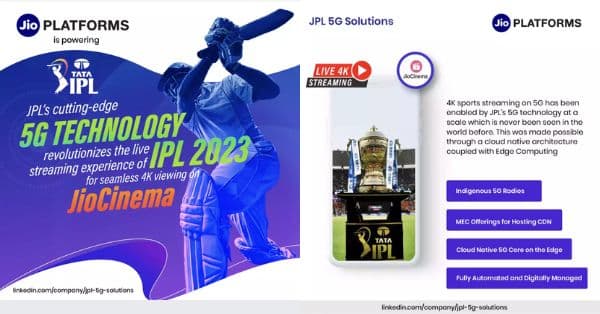The Indian Premier League (IPL) has a new player in town – Jio’s True 5G network. The Jio True 5G network is enabling the telco to provide 4K video-enabled, multi-camera angle streaming, while the capabilities of low latency and enhanced mobile broadband combined with Jio Platform (JPL)’s mobile edge computing (MEC) platform has delivered this service to millions of users on the network, said Aayush Bhatnagar, Jio’s Senior Vice President.
The 5G technology has brought about a significant change in the way cricket fans and players experience the game. According to Jio’s Senior Vice President, this year’s IPL is a clear example of how their True 5G network is being put to use.
Jio’s 5G network provides high-speed internet connectivity and low latency, leading to an improved experience for users. Fans can enjoy real-time streaming of matches without buffering or lags. Additionally, virtual reality technology powered by Jio’s 5G network allows fans to experience the games from the comfort of their homes.
Additionally, the 5G technology has impacted players’ performance. Jio’s 5G network has facilitated real-time coaching feedback for players, giving them an edge in their games. With their True 5G network, Jio is poised to bring about significant changes to the Indian telecommunication industry in the future.







































